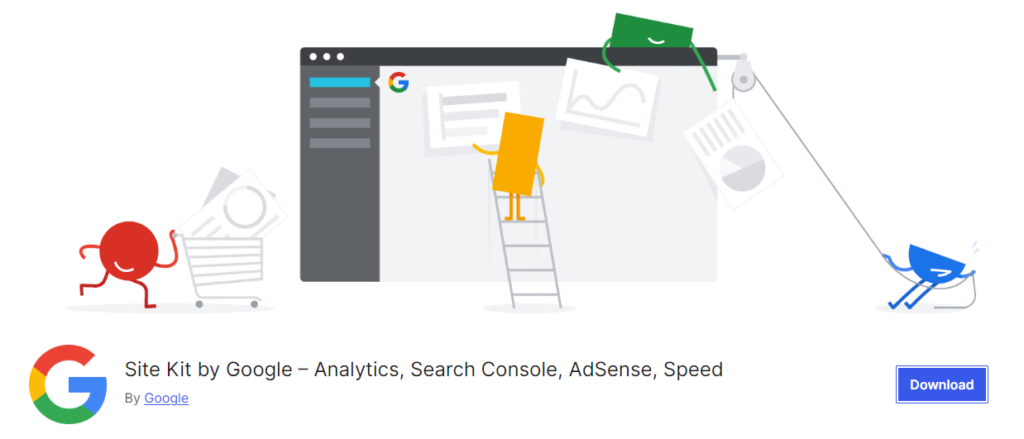Generally, clients are surprised to learn their website won’t magically rank on Google within weeks. It’s 2024…why isn’t it immediate? A new website, even if optimized well, can take up to 6 months to start ranking. For instance, if you’re a plumber, users searching for a plumber in your area won’t see your site organically within search results for 3-6 months.
Organically meaning your website populates within user’s search results without you having to pay.
“Non-organically” meaning that you pay for advertisements on Google Ads.
Why does it take 6 months to rank on Google and what data is Google using to determine my website’s ranking?
From the day you launch your website, Google analyzes your site and your company’s trust and authority. Trust is built over time through factors like high-quality content, positive user experience, and backlinks from reputable websites. This takes time.
What is it analyzing? Google gathers data on content relevance, user engagement, and technical aspects. It takes time for Google to thoroughly crawl your website, understand its content and purpose, and determine how well it aligns with search queries.

Here’s an analogy: Imagine Google as a librarian. A new book in the library wouldn’t be placed on the main shelf right away. The librarian would skim through it, check its references, and see if patrons find it useful before giving it a prominent spot.
There are other influences that can negatively impact your Google ranking are: Competition and Website Updates (or the lack thereof).
- Competition: Targeting highly competitive local keywords takes longer to rank.
- Website Content Updates: Adding fresh, valuable content signals activity to Google, speeding up ranking. Static websites take much longer.
A new website doesn’t rank because it lacks prior history, and Google is still gathering and analyzing its data. This process is slower and less accurate due to low traffic, making it harder for users to find the site on Google. This seems like a vicious cycle, right?
I don’t have six months. What can I do to rank quicker and improve my ranking quality?
Firstly, if you want to rank quicker be sure to create a sitemap and send it to Google – priority #1.
- Advantages – Improved indexing, prioritization, issue identification, and fresh content indexing.
- Disadvantages – If you don’t create a sitemap, indexing will be slow, Google may miss some of your content, and your SEO insights will be limited. If you or your web developer haven’t created a sitemap, do it or pay to have it done.
Secondly, monitoring your website’s insights with Google Search Console requires integrating Google with a script or plugin. This means Google is watching the behavior and activity on your website at all times. It uses this collected data to determine how well your website should rank.
If your website is WordPress based, like many websites, use this plugin developed by Google:

WordPress Plugin – Google Site Kit
Google tracks where users come from, their entry and exit pages, site duration, engagement, and bounce rate.
Ok, so what’s the solution? Manually drive traffic to your website in the meantime!
What can I do to manually drive traffic to my website?
- Blog: Also referred to as Content Marketing, adding new blog entries about relevant topics users are curious about once or twice a month will transform your website from a static / stagnant presence into an ever-evolving asset in the eyes of Google. (Don’t forget to update your sitemap after each addition and inform Google)
- Social Media: Share blog articles, posts, photos, and videos on platforms like Facebook, X, Instagram, and LinkedIn. Use hashtags, location tags, and your website’s URL to dramatically increase traffic.
- Discussion Boards: Join relevant discussion groups like ones on Facebook, Reddit, or miscellaneous forums. This will build trust within various communities.
- Google Business: Make sure your Google Business is polished like a gem. Duplicate your profile’s information across 20-30 popular directory websites, uploading the same images, duplicating the exact same copy and address format – this is called citation consistency. Then be sure to share updates regularly as you would on Social Media and ask your past clients for reviews.
- Email Marketing: Sharing promotions and again share those blog articles to email addresses of prior clients or potential clients. I suggest starting slowly – once every other month. Don’t burn’em – Nurture’em.
(+) If you apply these methods above, your website will generate more traffic. More data from traffic allows Google to better analyze and determine your ranking.
In addition, these efforts are lasting efforts. Your business will always have a feed of activity for users to stumble upon, whether they find you on Instagram, LinkedIn, or Facebook yesterday…two weeks ago…or three years ago. Opposed to spending advertising dollars – when you stop feeding the beast, the lights go out.

(-) If you don’t use these methods and neglect your website, your ranking will take longer to improve and your competitors that are doing the things listed above will inevitably outrank you.
Regardless of your business model, a website is like a digital storefront. It costs money to build, maintain, and market. If you lack the time or experience, consider hiring someone to handle these tasks. Start the conversation here, I’d love to help.



